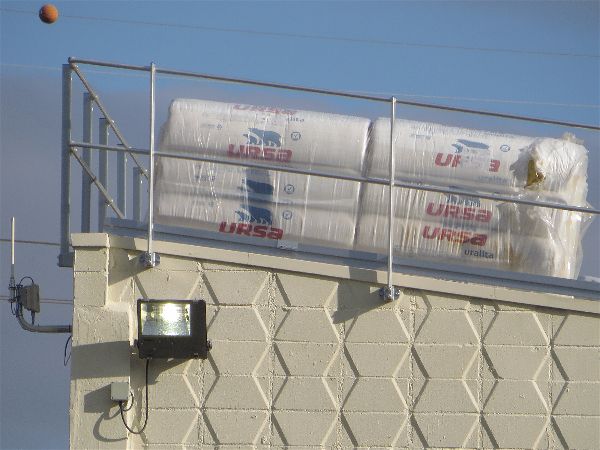Roof railing Absorber
When performing work at heights, all kinds of systems designed to protect against falls from a height should be a necessary and, most importantly, indispensable element. The choice of a given fall protection system depends primarily on the requirements imposed by the provisions on Occupational Health and Safety, the type of surface on which it is to be made as well as the individual approach of our clients and designers. The health and life of people working at height should be a priority for their principals, which is why it is so important to provide systems that protect these people from falling.
Roof railing
One of the many fall protection systems at height are roof railings. This type of roof protection is classified as a modern and, at the same time, a very well-functioning system that protects against falls from a height. It is a more and more frequently performed system due to the collective protection of people working at height within the zones at risk of falling. Roof rails, due to the fact that they are installed at the edges of the roof, act as a protection for people staying in protected spaces. In the case of existing protection in the form of barriers on the roof, employees are not required to have additional protective measures, because this protection meets the maximum standards of protection against falls from a height. The exceptions are situations where people working at height have to lean out or get into the space beyond the boundaries of the roof railings. In such a case, the use of additional safeguards, e.g. systems in the form of anchoring points, to which the employee can attach and safely perform further work, is necessary. It should be absolutely remembered that a person is fully secured only in places where there is well-designed and made fall protection system e.g. guardrails on roof.
Roof rails – where and why their use is required
Work at heights is associated with the performance of various activities, from construction works during the construction of new facilities and modernization of these facilities. This includes work that forces people at heights to approach hazardous areas such as unsecured roof edges. Such activities include assembly works of various types of elements, devices that are located on the roofs. Of course, service and maintenance work on both roofs and the elements within them also require appropriate protection. In addition to protecting the edges of roofs, roof rails are also used in places such as ladders, hatches or areas with skylights.

Roof rails protecting the edges of roofs, skylights or roof hatches
Roof railing fall protection systems can be made as free-standing systems, the arrangement of which is possible virtually anywhere, and fixed systems, which are mounted as stationary systems to prevent falls. In both cases, the maximum protection of zones where there is a risk of falling from a height is maintained. The assembly of these systems is relatively simple. The advantage of free-standing systems is the possibility of transferring or completely depositing this protection. It is considered a temporary system, although it can also fulfill the function of a permanent system. It depends mainly on the needs of clients and the work performed at height. On the other hand, fixed systems can be mounted, for example, to an attic and remain stationary on the roof. These systems are most often used in areas of roofs where various activities are often performed where protection against falls is unavoidable. Regardless of which system we choose, whether it will be a free-standing or permanent system, the most important thing is that it meets the maximum standards and performs the appropriate functions for which it was intended. Only a properly thought-out, designed and constructed fall protection system will be completely safe. It is important that each person at height has appropriate training, no matter what the fall protection system is used.
